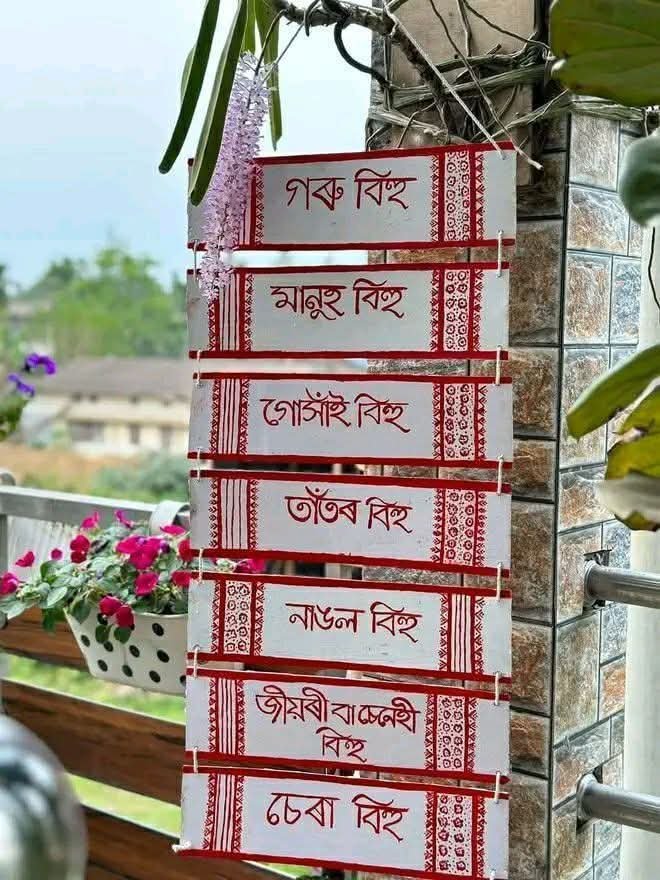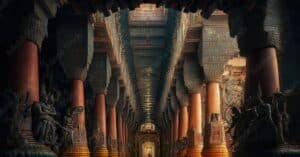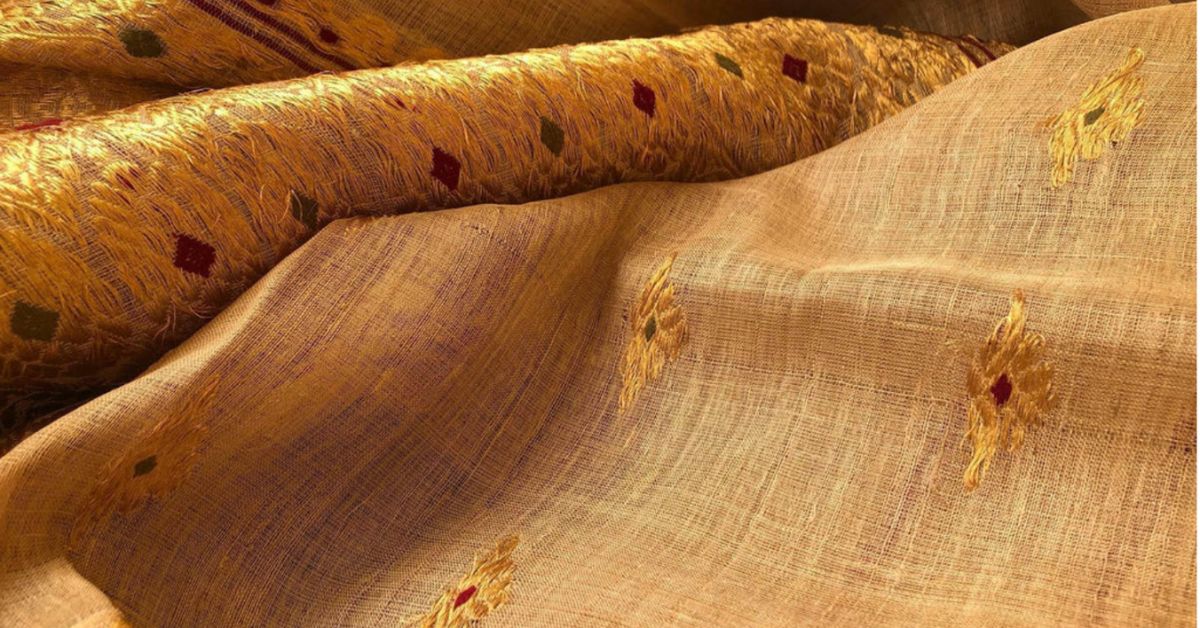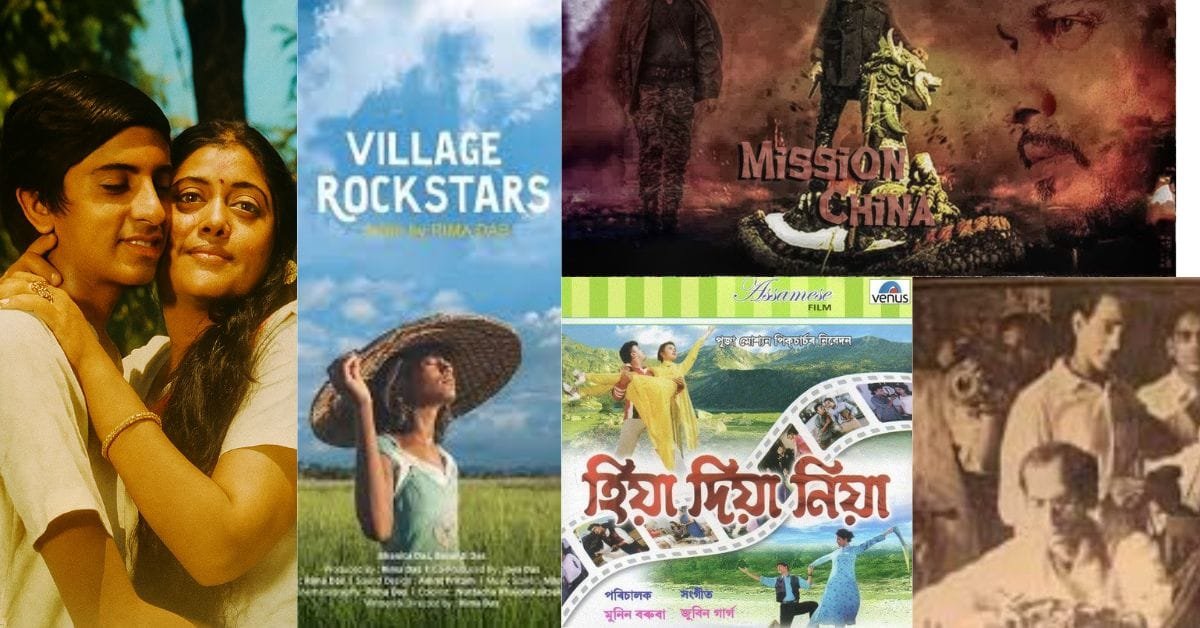Bihu is a confusing term for many, especially for outsiders who don’t have adequate knowledge of Assamese culture. Everybody knows that there are Bohag Bihu, Kati Bihu and Magh Bihu. But these bihus are also named as Rongali Bihu, Kongali Bihu and Bhogali Bihu respectively. Similarly. Bohag Bihu is not a standalone celebration. There are celebrations within the celebration. There are Bihus within a Bihu. As you know, Bohag Bihu is celebrated for 7 days and each day is named as a separate Bihu. So to speak, there are 7 Types of Bohag Bihu or 7 Days of Bohag Bihu. This blog is all about Bohag Bihu and its types.

7 Days of Bohag Bihu
The Main Bohag Bihu which is celebrated during mid-April in Assam is a 7-day-long affair with elaborate rituals and traditions. Each day of these seven days is named as a separate Bihu. They are named as Goru Bihu, Manuh Bihu, Gohain Bihu, Kutum Bihu, Tator Bihu/ Nangolor Bihu, Jiyori or Senehi Bihu, Mela Bihu or Chera Bihu.
Goru Bihu: Goru Bihu, celebrated on the last day of the Assamese year, involves cattle worship. It is generally celebrated on April 14 (the next morning after Uruka). On the occasion of Goru Bihu, the cattle of the villages are brought to a single water source thoroughly washed and washed, smeared with turmeric, and blessed for health and productivity.
The tradition is that the cattle have to be struck with sprigs of dighloti and makhiyati (kinds of wild herbs) and the owners say to the castles: “Lao kha, bengena kha, bosore bosore barhi ja / maar xoru, baper xoru, toi hobi bor bor goru” (translation: to eat gourd, eat brinjal, grow from year to year / your mother is small, your father is small, but you be a large one).

Old ropes for the cattles are discarded, and new ones are tied. Cattle roam freely for the day. Afterwards, they are washed, fed various vegetables, and thanked for aiding in a good harvest. Special foods like Bor Pitha are offered in the evening.
Note: Isn’t it a amazing culture that the cows and cattle are worshipped during the first of Bihu?
Manuh Bihu: The second day of the Bohag month marks Manuh Bihu (‘Manuh’ symbolises “Elders” and Ancestral Spirits). It is the most important day among the 7 day celebration of Bohag Bihu. People give offerings to the elders and the ancestral spirits and ask for blessings. People have a special bath with maah (black gram) and halodhi (turmeric), put on new clothes and light earthen lamps at Gohain Ghor (the household prayer place).

Gifts are exchanged during this occasion and almost every family offers the elders a Bihuwan or the Gamusa cloth as a symbol of respect. Nowadays, in addition to Bihuwan or Dhoti, modern clothes are also exchanged as gifts.
Gohain Bihu: It is observed on the third day of Bohag Bihu. Gaohai means Lord/God in Assamese. During Gosain Bihu, individuals frequent Namghars and Kirtanghars, singing traditional songs like Bihu Naam, verses from Kirtan Ghosa, and Nam Ghosa to seek protection and blessings for a fruitful harvest.

It is customary wear traditional attire while going to Namghar on Gohain Bihu. Men wear Dhoti-Kurta in white color in general. Women can wear Mekhela Sador of any colour.
Kutum Bihu: The fourth date of Bohag Mah is Kutum Bihu (“Kutum” symbolises “Kin”). On this day people visit their families, relatives and friends and have lunch or dinner together.
A recent observation has been noticed during the celebration of this day. As most the govt offices and schools open on the day, people follows the custom of visiting their families and relatives on the day of Manuh Bihu itself. Govt. Holidays is declared in Assam for 2/3 days till the day of Manuh Bihu.
Tator Bihu and Nangolor Bihu: Tatxaal (traditional Assamese handloom) and Nangol (plough) held significant importance in Assamese culture and society due to their utility. In the past, people revered these tools as a form of gratitude. However, these observances have become extinct in modern times.

Tatxaal is the symbol and pride of Assamese women. It is a century a old tradition of Assam. The weavers of Assam has been famous for their craft since ancient ages. That is why Tator bihu is celebrated. Nangolor Bihu is celebrated owning to extensive paddy cultivation in Assam. In general sense, Tator Bihu is for women and Nangolor Bihu is for men.
Jiyori or Senehi Bihu: On the sixth day of Bihu, daughters return to their parents’ home for celebrations, known as Jiyori Bihu. It is customary to exchange gifts with in laws. Like Kutum Bihu, it is also celebrated along with Kutum Bihu owning to busy schedule.
Senehi Bihu is Assamese form of Valentines Day. It is exclusively reserved for lovers, symbolizing love and reproduction. Youths meet their beloved and exchange gifts called “Bihuwan.” Senehi Bihu is hardly observed now a days or most people probably are not aware about this tradition.
It is also known as Kutum Bihu. “Kutum” symbolises “Kin”. On this day people visit their families, relatives and friends and have lunch or dinner together. A recent observation has been noticed during the celebration of this day. As most the govt offices and schools open on the day, people follows the custom of visiting their families and relatives on the day of Manuh Bihu itself. Govt. Holidays is declared in Assam for 2/3 days till the day of Manuh Bihu.
Mela Bihu: Mela means fair or bazaar. The concluding day of Bihu features outdoor festivities and competitions, often in fairs known as Bihu Melas. In ancient times, kings and their retinues participated in such fairs to engage in Bihu celebrations. This tradition continues with modern Bihu Melas, attracting people from across Assam, fostering communal harmony, and promoting inclusivity. It is also known as Chera Bihu.
The activities include Bihu dance performances, competitions, art exhibitions, and various cultural activities. It is part of Mukoli Bihu celebration where Bihu committees organise Bohag Bihu at community level.
Pre and Post Bohag Bihu
Besides these 7 Days of Bohag Bihu, there is a pre-Bohag Bihu celebration known as Chot Bihu or Rati Bihu. In ancient days, Raati Bihu celebrations start on the first night of the month of Chaitra (Chot in Assamese) and lasts till the commencement of Uruku (14 April). It was celebrated for a complete month or sometimes more than that. Nowadays, it is celebrated symbolically for a day or two. It is performed at night, so it is known as Rati (Rati means night in Assamese) Bihu.
Lastly, a Bihu also known as Bohagi Bidai is observed. It is the wrapping up of Bohag Bihu festivities. It is marked by the exchange of Pithas made by different families during the Bihu week among their friends and relatives.
Now you know that 7 types of bohag bihu is dedicated to every minute aspects of Assamese culture.
For more information on Bohag Bihu, read this blog where you can learn about Celebration, Mukoli Bihu, Husori, Bihu Dress and Rituals, History and Origin of Bohag Bihu.
Check out this blog for Bohag Bihu wishes with pictures and quotes













One Response
Very Clear and Lucent Description With Examples making it easy To Comprehend….Loved engulfing in deep Knowledge about the culture where i Reside.